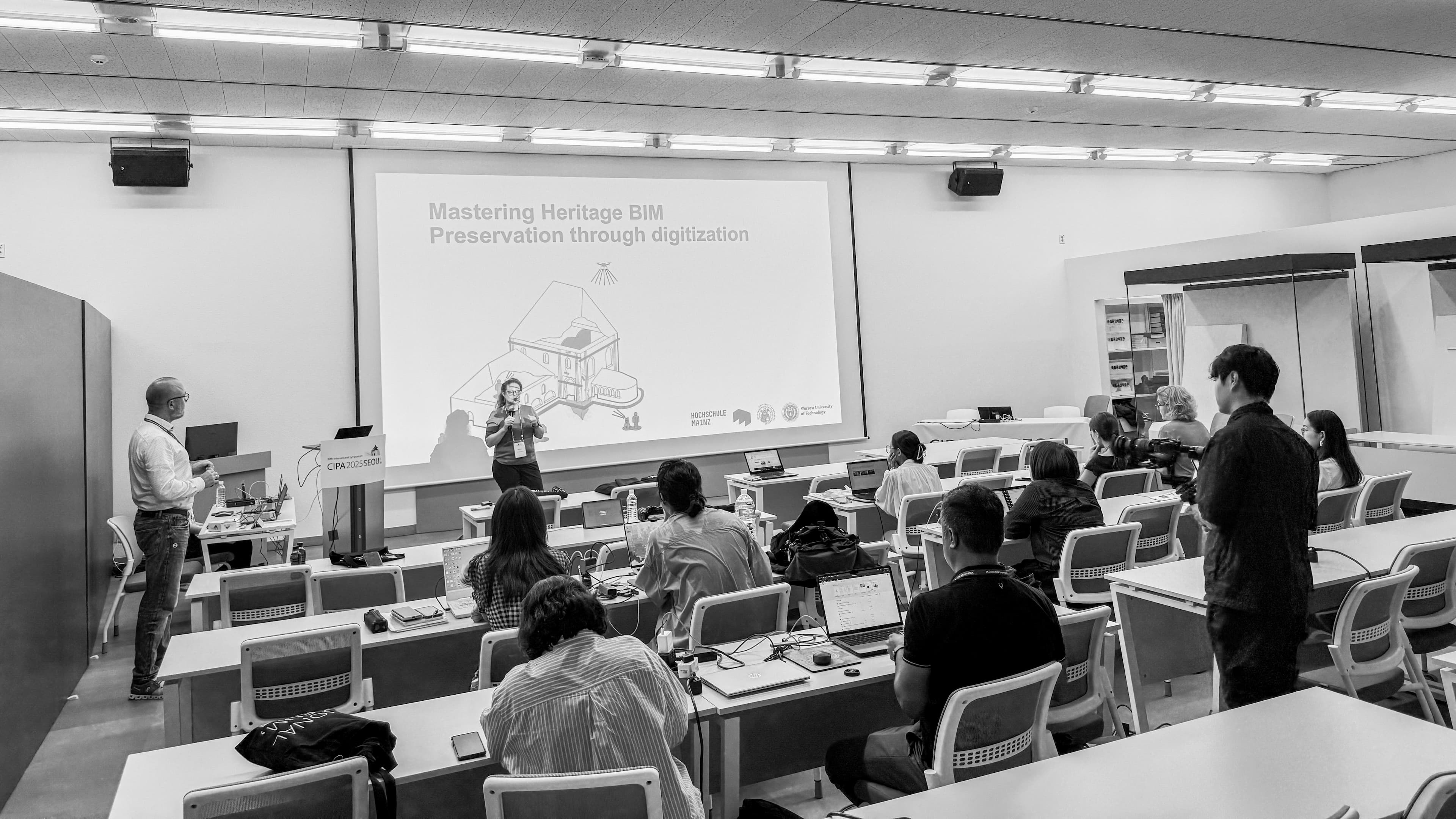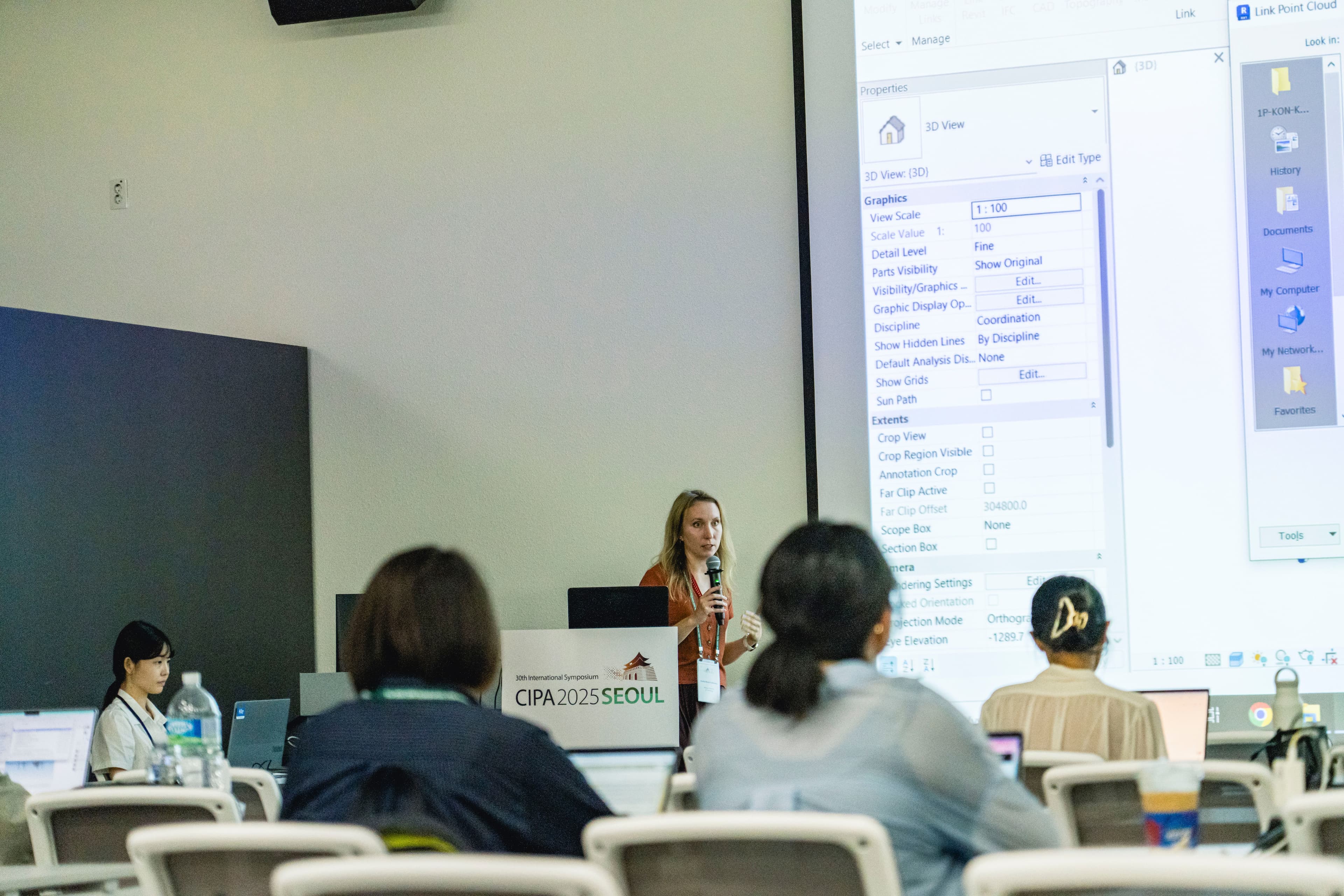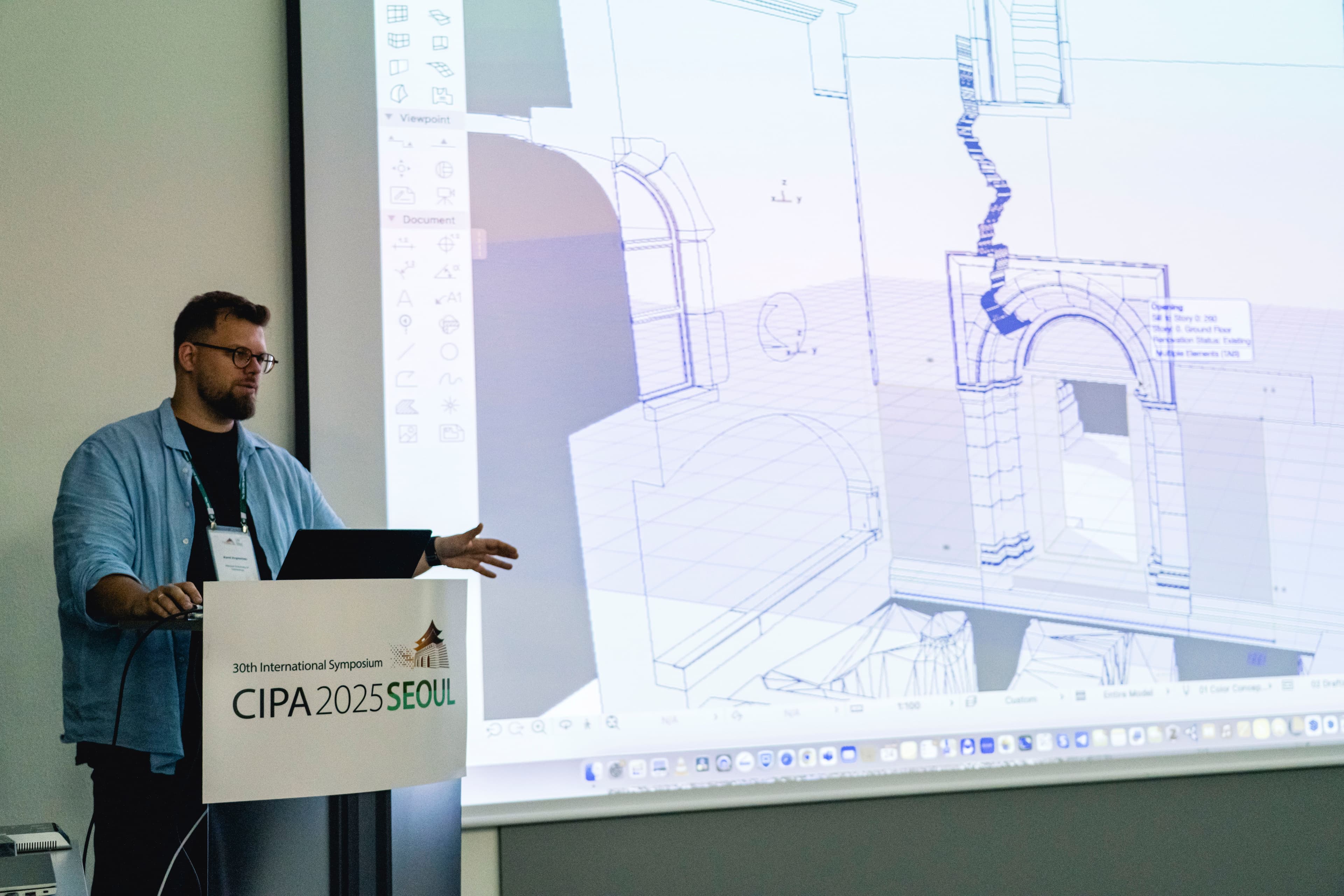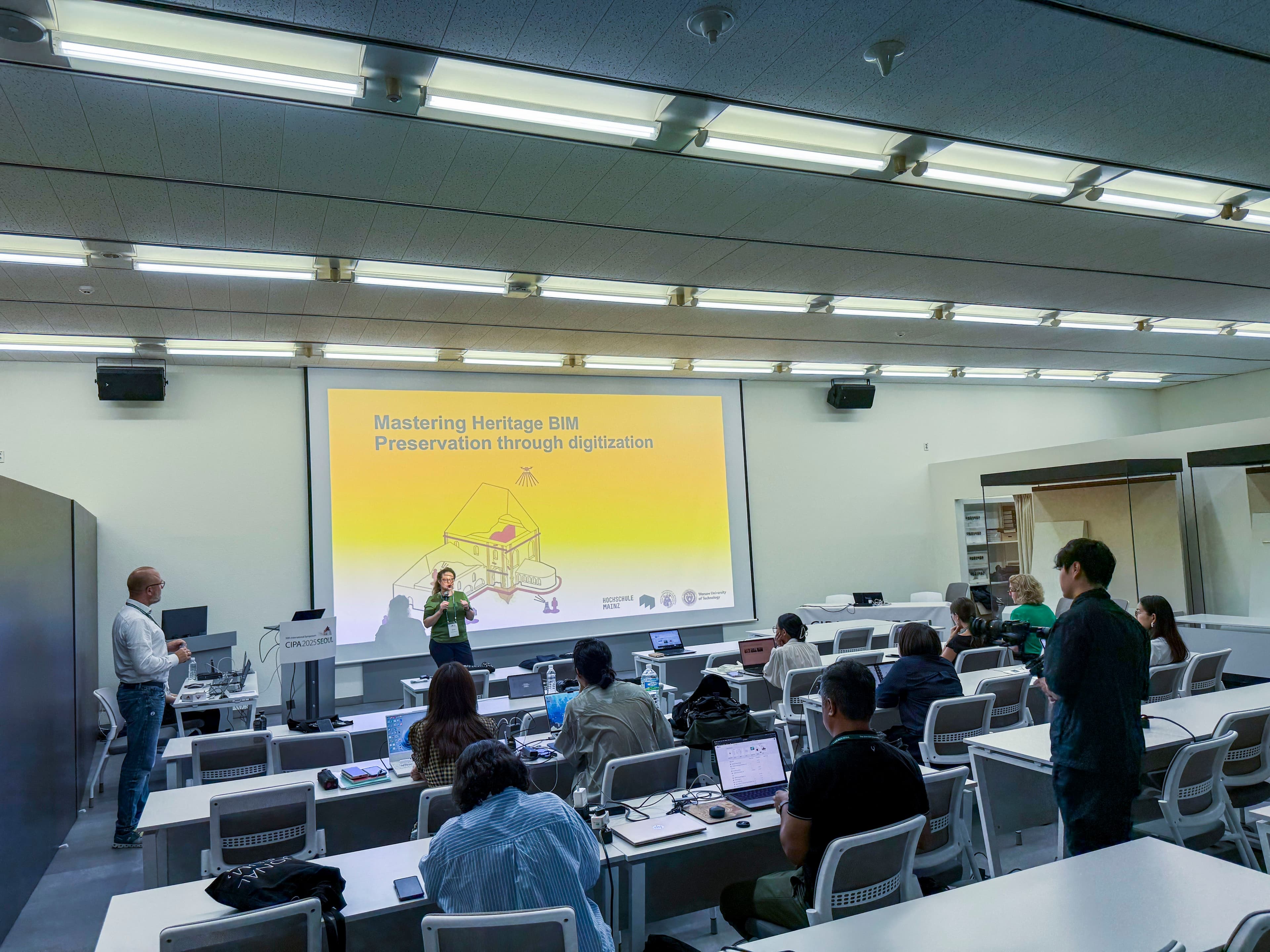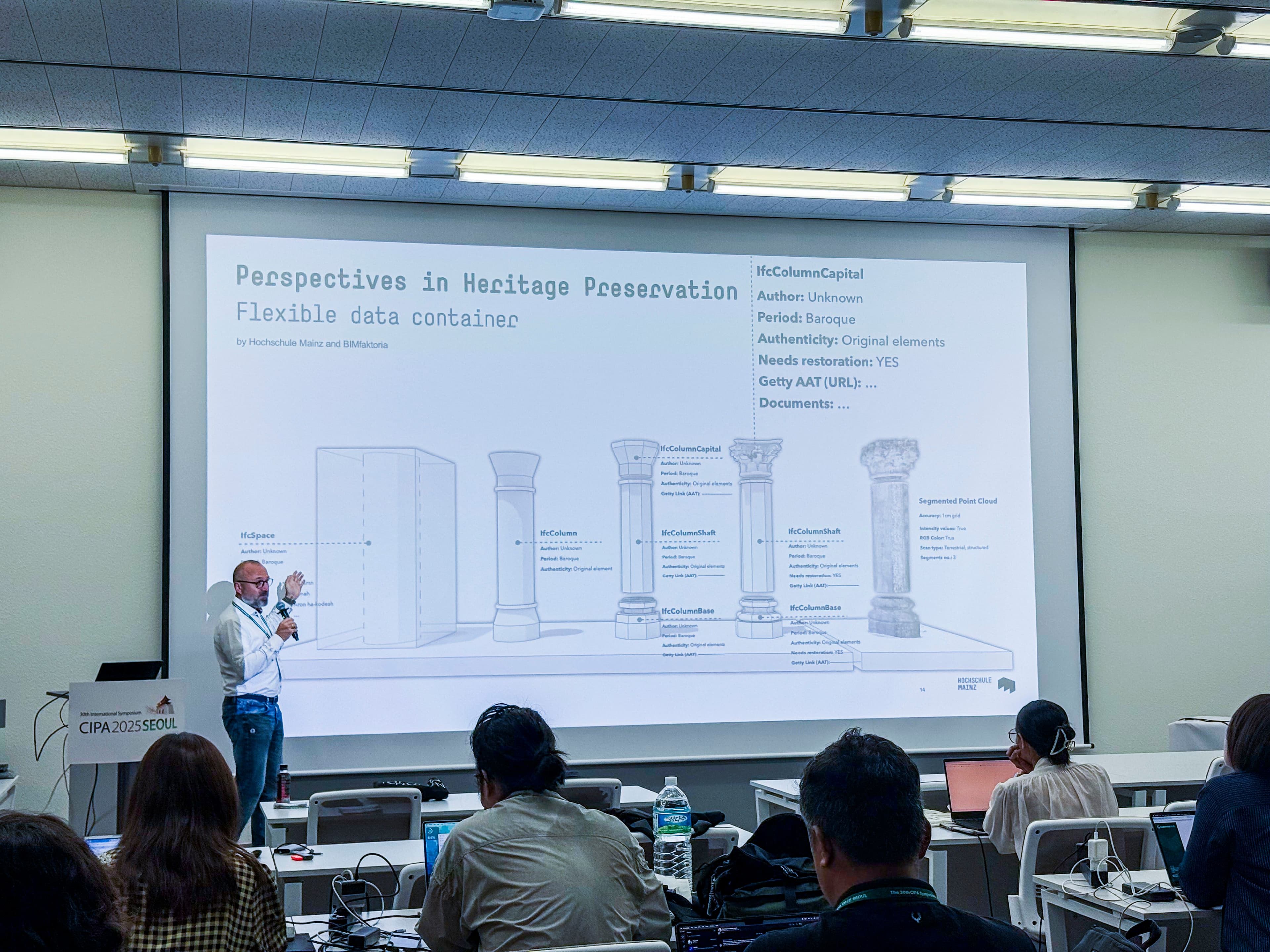The workshop “Mastering Heritage BIM – Preservation through Digitization” was held during the CIPA 2025 conference in Seoul. It brought together experts, researchers, and students to explore innovative methods in Heritage Building Information Modeling (HBIM) as a tool for the documentation, management, and conservation of cultural heritage.
Synagogue Worms Project Website.
Based on the case study of the UNESCO World Heritage Site Worms Synagogue, the event combined lectures, hands-on exercises, and interdisciplinary collaboration, demonstrating how HBIM can serve as a sustainable framework for preserving endangered monuments.
Challenges in Heritage Conservation
- Increasing environmental and structural risks threatening historic monuments.
- Fragmented documentation methods and lack of interoperability across disciplines.
- Limited use of advanced digital workflows in heritage management.
- The need for long-term, standardized digital archives to support conservation.
Workshop Approach & Solutions
The workshop offered participants direct experience with state-of-the-art digital tools and workflows:
- 3D Data Acquisition & Processing
- Laser scanning and photogrammetry for precise documentation.
- Point cloud segmentation and quality control using CloudCompare.
- HBIM Model Creation
- Modeling in Archicad and Revit.
- Creating HBIM Families and Libraries with varying Levels of Geometry (LoG) and Information (LoI).
- Interdisciplinary Collaboration
- Data federation and clash detection in BIMcollab Common Data Environment (CDE) such as Catenda Hub.
- Application of Information Delivery Specification (IDS) and buildingSMART Data Dictionary (bSDD) using Blender + BonsaiBIM.
- Documentation & Archiving
- Structured reporting and PDF documentation.
- IFC based model integration and direct workflows in Blender.
Learning Outcomes
Participants gained insights into:
- The full HBIM-based project collaboration workflow from understanding data acquisition to digital model creation.
- Applying interoperability standards (IFC, bSDD) in real-world heritage projects.
- Managing information across multidisciplinary teams.
- Understanding the potential of HBIM as a long-term digital memory for cultural heritage.
